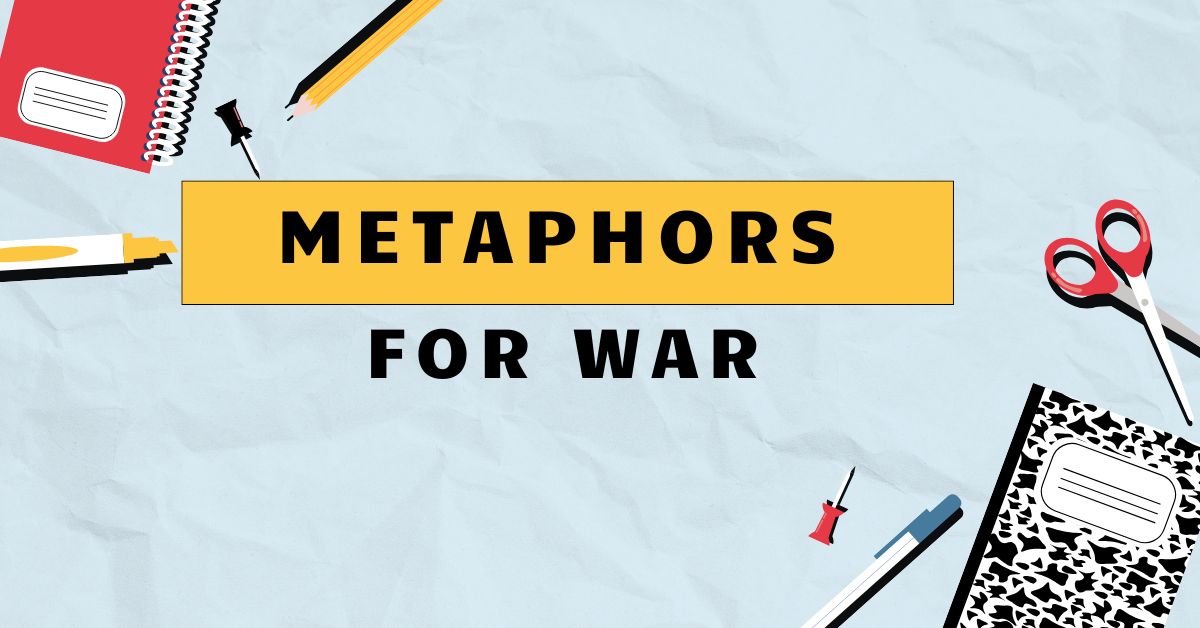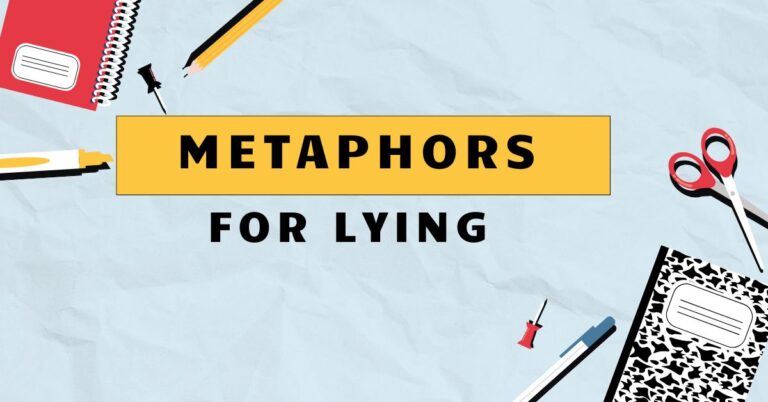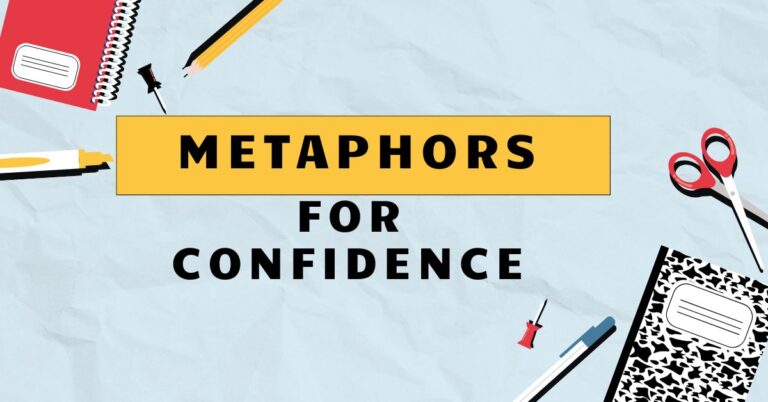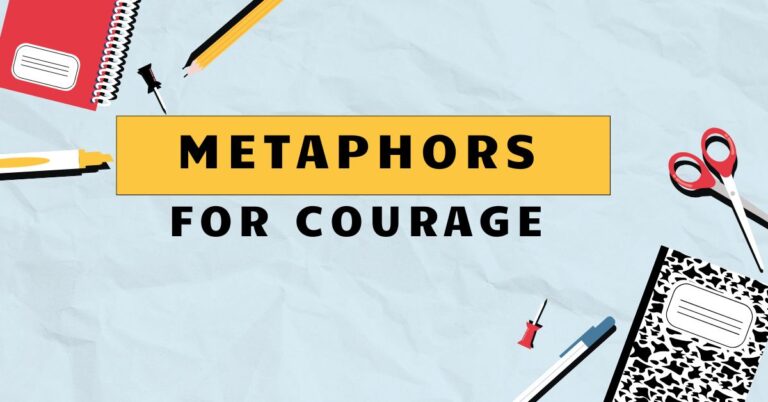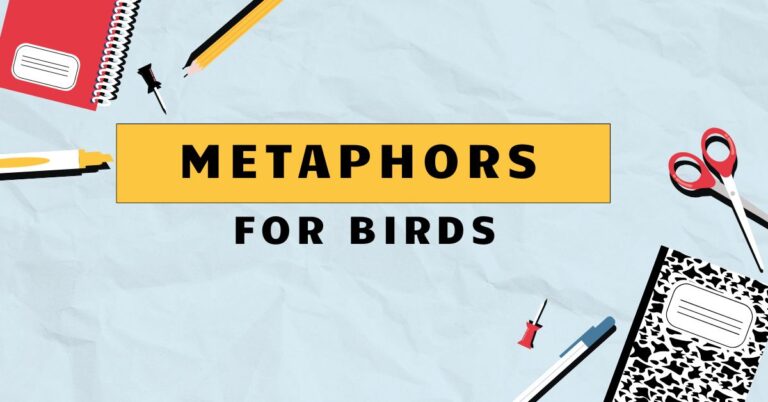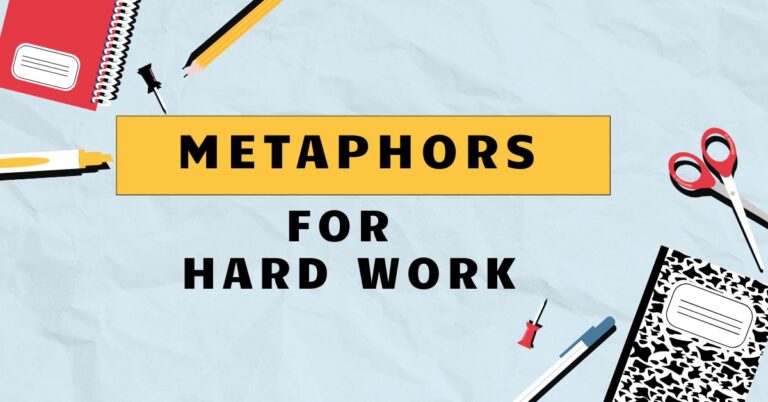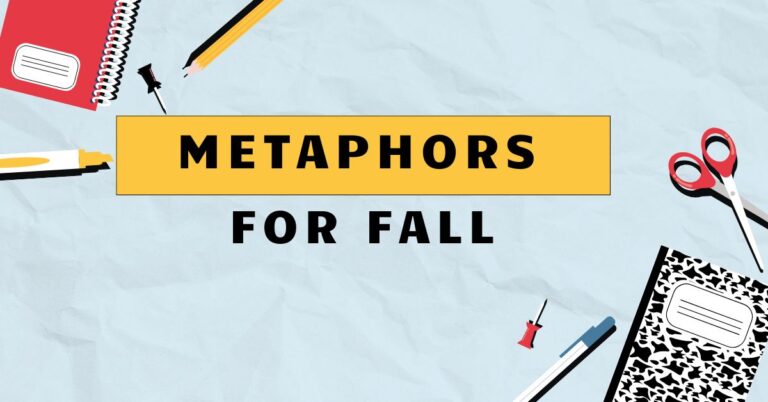37 Metaphors for War: Understanding Figurative Language
Metaphors are powerful tools that shape our understanding of complex concepts, and war is no exception. By using metaphors, we can frame abstract ideas and emotional experiences associated with conflict into more relatable and understandable terms.
This article delves into the world of metaphors for war, exploring their structure, types, and usage. Whether you’re an English language learner, a student of literature, or simply someone interested in the power of language, this guide will provide you with a comprehensive understanding of how metaphors are used to describe and interpret war.
Table of Contents
- Introduction
- Definition of Metaphor for War
- Structural Breakdown
- Types of War Metaphors
- Examples of War Metaphors
- Nature Metaphor Examples
- Game Metaphor Examples
- Disease Metaphor Examples
- Economic Metaphor Examples
- Sport Metaphor Examples
- Usage Rules
- Common Mistakes
- Practice Exercises
- Advanced Topics
- FAQ
- Conclusion
Definition of Metaphor for War
A metaphor for war is a figure of speech that uses an image, idea, or concept from one domain (the source domain) to describe war (the target domain). This technique allows us to understand and communicate the complexities of war in a more vivid and relatable way.
Metaphors are not merely decorative; they actively shape our perception and understanding of war, influencing public opinion and political discourse.
What is a Metaphor?
A metaphor is a figure of speech in which a word or phrase is applied to an object or action to which it is not literally applicable. It’s a comparison that doesn’t use “like” or “as,” directly stating that one thingisanother.
For example, saying “He is a lion” implies that he possesses lion-like qualities such as bravery and strength. Metaphors help us understand abstract or complex ideas by relating them to something more concrete or familiar.
War as a Concept
War is a multifaceted concept encompassing armed conflict, political struggle, and social upheaval. It involves violence, strategy, and significant human cost.
Because of its complexity and emotional weight, war is often described using metaphors to make it more comprehensible and to evoke specific emotional responses. These metaphors can simplify, amplify, or even distort our understanding of war depending on the chosen comparison.
Metaphorical Mapping
Metaphorical mapping is the process of transferring conceptual structure from one domain (the source) to another (the target). In the context of war metaphors, this involves mapping attributes, characteristics, and relationships from the source domain (e.g., games, diseases, nature) onto the target domain of war.
This mapping allows us to reason about war in terms of the source domain, highlighting certain aspects while potentially obscuring others. The choice of source domain significantly influences how we perceive and discuss war.
Structural Breakdown
Understanding the structure of a war metaphor involves identifying the source domain, the target domain, and the mappings between them. This framework helps in deconstructing and analyzing the underlying assumptions and implications of the metaphor.
Source Domain
The source domain is the conceptual area from which the metaphor is drawn. It’s the familiar or concrete concept used to explain war.
Common source domains for war metaphors include nature (storms, fires), games (chess, poker), diseases (cancer, plague), economics (investment, bankruptcy), and sports (boxing, football). The characteristics of the source domain are then projected onto the target domain of war.
Target Domain
The target domain is the concept being described or explained, which, in this case, is war. War encompasses various aspects such as battles, strategies, casualties, political objectives, and the overall impact on society.
The metaphor’s effectiveness depends on how well the source domain’s attributes align with and illuminate these aspects of war. The target domain remains constant when analyzing war metaphors, while the source domain changes.
Mappings
Mappings are the specific correspondences between elements of the source and target domains. These connections allow us to transfer knowledge and inferences from the source domain to the target domain.
For instance, if war is described as a game of chess, the mapping might include equating military leaders to chess pieces, strategic maneuvers to chess moves, and victory to checkmate. These mappings highlight certain aspects of war, such as strategy and competition, while potentially downplaying others, such as human suffering.
Types of War Metaphors
War metaphors can be categorized based on the source domain they draw from. Each category offers a unique perspective on war, highlighting different aspects and evoking distinct emotional responses.
Nature Metaphors
Nature metaphors often portray war as a destructive and uncontrollable force, similar to natural disasters. These metaphors emphasize the chaotic and devastating aspects of conflict, highlighting its immense power and the helplessness of those caught in its path.
Examples include comparing war to a storm, a wildfire, or an earthquake.
Game Metaphors
Game metaphors frame war as a strategic competition with clear rules and objectives. These metaphors emphasize planning, tactics, and the pursuit of victory.
They often involve comparing war to chess, poker, or other games of strategy. While they can highlight the intellectual aspects of war, they may also downplay the human cost and ethical considerations.
Disease Metaphors
Disease metaphors depict war as a spreading illness that infects and corrupts society. These metaphors emphasize the destructive and pervasive nature of conflict, highlighting its ability to erode social structures and individual well-being.
Examples include comparing war to cancer, a plague, or a virus.
Economic Metaphors
Economic metaphors frame war as a cost-benefit analysis, emphasizing the resources invested, the potential gains, and the economic consequences. These metaphors highlight the financial burden of war and the potential economic benefits or losses associated with it.
Examples include describing war as an investment, a trade war, or an economic drain.
Sport Metaphors
Sport metaphors portray war as a competitive contest with clear winners and losers. These metaphors emphasize the physical exertion, skill, and determination involved in conflict.
They often involve comparing war to boxing, football, or other competitive sports. While they can highlight the bravery and resilience of soldiers, they may also oversimplify the complexities and ethical dimensions of war.
Examples of War Metaphors
The following tables provide examples of war metaphors categorized by their source domain. Each example illustrates how the source domain is used to describe and understand war.
Nature Metaphor Examples
This table illustrates how nature metaphors are used to describe war, emphasizing its destructive and uncontrollable aspects.
| Metaphor | Explanation |
|---|---|
| “The war was a raging storm.” | Compares the intensity and destructiveness of war to a violent storm. |
| “Conflict erupted like a volcano.” | Suggests a sudden and overwhelming outbreak of violence. |
| “The invasion was a tsunami of force.” | Highlights the massive and unstoppable nature of the invasion. |
| “The battle was a wildfire spreading through the city.” | Emphasizes the rapid and destructive spread of the conflict. |
| “The occupation was a long, harsh winter.” | Depicts the occupation as a period of hardship and suffering. |
| “The rebellion was a rising tide.” | Suggests a growing and unstoppable movement of resistance. |
| “The war left a barren landscape.” | Highlights the devastating impact of war on the environment and society. |
| “The conflict was a deep freeze in relations.” | Describes the complete breakdown of diplomatic ties. |
| “The peace talks were a fragile seedling.” | Emphasizes the delicate and uncertain nature of the peace process. |
| “The revolution was an earthquake shaking the foundations of society.” | Highlights the profound and transformative impact of the revolution. |
| “The bombing campaign was a rain of fire.” | Emphasizes the destructive and overwhelming nature of the aerial attacks. |
| “The soldiers were weathered by the storm of war.” | Describes the physical and emotional toll of war on the soldiers. |
| “The country was drowning in the sea of conflict.” | Highlights the overwhelming and inescapable nature of the war. |
| “The propaganda was a dense fog, obscuring the truth.” | Depicts the propaganda as something that hides and distorts reality. |
| “The enemy advanced like a swarm of locusts.” | Emphasizes the overwhelming number and destructive impact of the enemy. |
| “The war zone was a desolate wasteland.” | Highlights the complete devastation and emptiness left behind by the war. |
| “The political climate was a brewing storm.” | Suggests impending conflict and tension in the political arena. |
| “The peace agreement was a ray of sunshine after a long storm.” | Emphasizes the hope and relief brought by the peace agreement. |
| “The conflict was a thorny issue.” | Depicts the conflict as a complex and difficult problem to resolve. |
| “The liberation was a blossoming of freedom.” | Highlights the positive and transformative impact of liberation. |
| “The soldiers were as tough as mountains.” | Emphasizes the resilience and strength of the soldiers. |
| “The country was swept away by the flood of war.” | Highlights the overwhelming and destructive impact of the war. |
| “The enemy’s attack was a bolt from the blue.” | Emphasizes the sudden and unexpected nature of the attack. |
| “The peace process was a slow thaw.” | Depicts the gradual and delicate improvement in relations. |
| “The war left scars on the land like wrinkles on an old face.” | Highlights the lasting and visible impact of the war. |
Game Metaphor Examples
This table illustrates how game metaphors are used to describe war, emphasizing strategy, tactics, and competition.
| Metaphor | Explanation |
|---|---|
| “War is a chess game with human pieces.” | Compares war to a strategic game where soldiers are manipulated like chess pieces. |
| “The battle was a high-stakes poker game.” | Suggests that the battle involved risk, bluffing, and calculated decisions. |
| “The invasion was a strategic move on the global chessboard.” | Highlights the strategic planning and geopolitical implications of the invasion. |
| “The negotiations were a game of cat and mouse.” | Emphasizes the manipulative and evasive tactics used by both sides. |
| “The conflict was a zero-sum game.” | Depicts the conflict as a situation where one side’s gain is the other side’s loss. |
| “The war was a long and drawn-out campaign, like a game of Risk.” | Suggests that the war involved territorial control and strategic alliances. |
| “The political maneuvering was a complex game of Go.” | Highlights the intricate and long-term planning involved in political strategy. |
| “The arms race was a dangerous game of chicken.” | Emphasizes the risk-taking and brinkmanship involved in the arms race. |
| “The peace talks were a delicate game of diplomacy.” | Depicts the peace talks as requiring skill, tact, and careful negotiation. |
| “The revolution was a game-changer.” | Highlights the transformative impact of the revolution. |
| “The military strategy was a masterstroke.” | Suggests that the strategy was brilliant and decisive. |
| “The war was a losing game from the start.” | Depicts the war as doomed to failure. |
| “The enemy was outmaneuvered.” | Highlights the strategic superiority of one side over the other. |
| “The conflict was a battle of wits.” | Emphasizes the intellectual and strategic aspects of the conflict. |
| “The war became a stalemate.” | Depicts the war as having reached a point where neither side can gain an advantage. |
| “The political landscape was a minefield.” | Highlights the dangers and risks involved in political decision-making. |
| “The propaganda was a carefully crafted strategy.” | Emphasizes the deliberate and calculated nature of the propaganda. |
| “The peace agreement was a strategic victory.” | Highlights the strategic benefits gained from the peace agreement. |
| “The conflict was a high-stakes gamble.” | Depicts the conflict as involving significant risk and potential reward. |
| “The election was a rigged game.” | Suggests that the election was unfair and manipulated. |
| “The government was playing a dangerous game with the country’s future.” | Emphasizes the risk and potential consequences of the government’s actions. |
| “The diplomatic efforts were a delicate dance.” | Depicts the diplomatic efforts as requiring careful coordination and precision. |
| “The economic sanctions were a strategic move.” | Highlights the strategic purpose of the economic sanctions. |
| “The war was a game of attrition.” | Depicts the war as a prolonged and exhausting struggle. |
| “The revolution was a turning point in the game.” | Highlights the significant and transformative impact of the revolution. |
Disease Metaphor Examples
This table illustrates how disease metaphors are used to describe war, emphasizing its destructive and pervasive nature.
| Metaphor | Explanation |
|---|---|
| “War is a cancer eating away at society.” | Compares war to a disease that gradually destroys the health and well-being of society. |
| “The conflict was a spreading plague.” | Suggests that the conflict is rapidly infecting and devastating the population. |
| “The corruption was a virus infecting the government.” | Highlights the pervasive and damaging nature of corruption. |
| “The hatred was a festering wound.” | Emphasizes the pain and bitterness caused by unresolved conflicts. |
| “The propaganda was a toxic infection.” | Depicts the propaganda as harmful and damaging to the public’s understanding. |
| “The war left the country in a state of paralysis.” | Suggests that the war has crippled the country’s ability to function. |
| “The peace process was a slow recovery from a severe illness.” | Depicts the peace process as a gradual and challenging journey back to health. |
| “The extremism was a malignant tumor.” | Highlights the dangerous and destructive nature of extremism. |
| “The society was sick with war.” | Emphasizes the pervasive and debilitating impact of war on society. |
| “The trauma of war left deep scars.” | Highlights the lasting psychological impact of war. |
| “The economic crisis was a symptom of the war.” | Suggests that the economic crisis is a consequence of the war. |
| “The political instability was a contagious disease.” | Emphasizes the rapid and widespread spread of political unrest. |
| “The refugees were victims of a social epidemic.” | Depicts the refugee crisis as a widespread and devastating social problem. |
| “The war was a chronic condition.” | Suggests that the war is a long-lasting and persistent problem. |
| “The prejudice was a deep-seated infection.” | Highlights the entrenched and pervasive nature of prejudice. |
| “The corruption was poisoning the country.” | Emphasizes the harmful and destructive impact of corruption. |
| “The peace agreement was a vaccine against future conflict.” | Suggests that the peace agreement will protect against future outbreaks of war. |
| “The social divisions were a breeding ground for conflict.” | Emphasizes the conditions that promote and sustain conflict. |
| “The society was suffering from post-war trauma.” | Highlights the psychological and emotional impact of war on society. |
| “The political system was in intensive care.” | Depicts the political system as being in a critical and fragile state. |
| “The war was a pandemic of violence.” | Emphasizes the widespread and devastating impact of the war. |
| “The propaganda was a form of mental pollution.” | Depicts the propaganda as harmful and damaging to people’s minds. |
| “The country was in a coma after the war.” | Suggests that the country was in a state of inactivity and stagnation. |
| “The peacekeepers were trying to heal the wounds of war.” | Emphasizes the efforts to repair the damage caused by the war. |
| “The war was a fever that gripped the nation.” | Highlights the intense and consuming nature of the war. |
Economic Metaphor Examples
This table illustrates how economic metaphors are used to describe war, emphasizing the costs, benefits, and consequences of conflict.
| Metaphor | Explanation |
|---|---|
| “War is an investment with uncertain returns.” | Compares war to a financial investment where the outcome is not guaranteed. |
| “The conflict was an economic drain on the country.” | Suggests that the conflict is depleting the country’s resources. |
| “The arms race was a costly competition.” | Highlights the financial burden of the arms race. |
| “The war bankrupted the nation.” | Emphasizes the devastating economic consequences of the war. |
| “The peace dividend was a welcome relief.” | Depicts the economic benefits gained from the end of the war. |
| “The sanctions were a trade war.” | Highlights the economic conflict between countries. |
| “The reconstruction efforts were a massive financial undertaking.” | Emphasizes the scale and cost of rebuilding after the war. |
| “The war created a black market.” | Suggests that the war led to illegal economic activities. |
| “The war was a boom for the arms industry.” | Highlights the economic benefits gained by the arms industry. |
| “The refugees were an economic burden.” | Emphasizes the financial strain caused by the influx of refugees. |
| “The war devalued human life.” | Highlights the moral cost of the war. |
| “The propaganda was a carefully calculated marketing campaign.” | Emphasizes the deliberate and strategic nature of the propaganda. |
| “The peace agreement was a valuable asset.” | Highlights the economic and social benefits of the peace agreement. |
| “The conflict was a high-risk venture.” | Depicts the conflict as involving significant financial risk. |
| “The economic sanctions were a form of financial warfare.” | Emphasizes the economic pressure exerted through sanctions. |
| “The war stimulated economic growth in some sectors.” | Suggests that the war had some positive economic consequences. |
| “The government was investing heavily in defense.” | Highlights the financial commitment to military spending. |
| “The war created a debt crisis.” | Emphasizes the financial burden caused by the war. |
| “The economic recovery was a slow and painful process.” | Depicts the economic recovery as a gradual and challenging journey. |
| “The corruption was a form of economic sabotage.” | Emphasizes the damaging impact of corruption on the economy. |
| “The war was a costly experiment.” | Depicts the war as an undertaking with uncertain outcomes and high expenses. |
| “The economic aid was a lifeline for the country.” | Emphasizes the crucial support provided by economic assistance. |
| “The war was a waste of human capital.” | Highlights the loss of skilled workers and professionals due to the war. |
| “The peace agreement created new economic opportunities.” | Suggests that the peace agreement has opened up possibilities for economic growth. |
| “The conflict was a drain on intellectual resources.” | Emphasizes the loss of talent and innovation due to the war. |
Sport Metaphor Examples
This table illustrates how sport metaphors are used to describe war, emphasizing competition, skill, and physical exertion.
| Metaphor | Explanation |
|---|---|
| “The war was a boxing match between two heavyweights.” | Compares war to a physical contest between powerful adversaries. |
| “The battle was a football game with high stakes.” | Suggests that the battle involved strategic plays and intense competition. |
| “The invasion was a blitzkrieg.” | Highlights the rapid and overwhelming attack. |
| “The soldiers were fighting with the heart of a champion.” | Emphasizes the bravery and determination of the soldiers. |
| “The conflict was a marathon of endurance.” | Depicts the conflict as a long and grueling struggle. |
| “The military strategy was a winning play.” | Highlights the effectiveness of the military strategy. |
| “The enemy was blindsided by the attack.” | Suggests that the enemy was caught off guard and unprepared. |
| “The war became a stalemate.” | Depicts the war as having reached a point where neither side can gain an advantage. |
| “The negotiations were a delicate game of give and take.” | Depicts the negotiations as requiring compromise and strategic concessions. |
| “The revolution was a game-changer.” | Highlights the transformative impact of the revolution. |
| “The military strategy was a masterstroke.” | Suggests that the strategy was brilliant and decisive. |
| “The war was a losing game from the start.” | Depicts the war as doomed to failure. |
| “The enemy was outmaneuvered.” | Highlights the strategic superiority of one side over the other. |
| “The conflict was a battle of wills.” | Emphasizes the psychological and emotional aspects of the conflict. |
| “The war became a war of attrition.” | Depicts the war as a prolonged and exhausting struggle. |
| “The soldiers were as tough as nails.” | Emphasizes the resilience and strength of the soldiers. |
| “The peace agreement was a hard-fought victory.” | Highlights the effort and determination required to achieve peace. |
| “The political landscape was a playing field.” | Depicts the political arena as a competitive environment. |
| “The propaganda was a carefully orchestrated campaign.” | Emphasizes the deliberate and strategic nature of the propaganda. |
| “The peace agreement was a strategic win.” | Highlights the strategic benefits gained from the peace agreement. |
| “The conflict was a high-stakes gamble.” | Depicts the conflict as involving significant risk and potential reward. |
| “The government was playing a dangerous game with the country’s future.” | Emphasizes the risk and potential consequences of the government’s actions. |
| “The diplomatic efforts were a delicate dance.” | Depicts the diplomatic efforts as requiring careful coordination and precision. |
| “The economic sanctions were a strategic move.” | Highlights the strategic purpose of the economic sanctions. |
| “The war was a game of attrition.” | Depicts the war as a prolonged and exhausting struggle. |
Usage Rules
Using war metaphors effectively requires careful consideration of context, cultural sensitivity, and avoiding clichés. These guidelines ensure that the metaphors enhance understanding rather than detracting from it.
Contextual Appropriateness
Ensure that the metaphor is appropriate for the context in which it is used. A metaphor that is effective in a political speech may not be suitable for a news report or an academic paper.
Consider the audience and the purpose of the communication when choosing a metaphor. Be mindful of the tone and emotional impact of the metaphor.
Cultural Sensitivity
Be aware of cultural differences in the interpretation of metaphors. A metaphor that is common in one culture may be offensive or misunderstood in another.
Avoid using metaphors that perpetuate stereotypes or trivialize the experiences of those affected by war. Respect diverse perspectives and avoid language that could be seen as insensitive or disrespectful.
Avoiding Cliches
Avoid overused and predictable metaphors, as they can weaken the impact of your writing. Strive for originality and creativity in your choice of metaphors.
Consider using less common source domains or creating novel mappings to make your metaphors more engaging and thought-provoking. A fresh metaphor can capture the reader’s attention and provide a new perspective on war.
Common Mistakes
Several common mistakes can undermine the effectiveness of war metaphors. Being aware of these pitfalls can help you use metaphors more skillfully and avoid unintended consequences.
Mixed Metaphors
Avoid combining metaphors from different source domains that create illogical or confusing images. For example, “The war was a raging storm that was also a chess game” mixes incompatible images and weakens the overall impact.
Incorrect: The war was a raging storm that was also a chess game.
Correct: The war was a raging storm.
Correct: The war was a complex chess game.
Overused Metaphors
Steer clear of clichés and predictable metaphors that have lost their impact through overuse. For example, “War is hell” is a common but often ineffective metaphor because it lacks originality.
Instead, try to find fresh and innovative ways to describe war.
Overused: War is hell.
Better: War is a slow erosion of the soul.
Inappropriate Metaphors
Avoid using metaphors that trivialize the suffering and human cost of war. For example, comparing war to a harmless game or a minor inconvenience is insensitive and disrespectful.
Choose metaphors that reflect the gravity and complexity of war.
Inappropriate: The war was just a minor setback.
Appropriate: The war was a devastating blow to the nation.
Practice Exercises
These exercises will help you practice identifying, creating, and analyzing war metaphors. Each exercise is designed to reinforce your understanding of the concepts covered in this article.
Exercise 1: Identifying Metaphors
Identify the metaphor in each sentence and explain its meaning.
| Question | Answer |
|---|---|
| 1. The propaganda was a carefully woven web. | Metaphor: “carefully woven web.” Meaning: The propaganda was intricate and deceptive. |
| 2. The peace talks were a minefield of potential disagreements. | Metaphor: “minefield.” Meaning: The peace talks were fraught with danger and hidden conflicts. |
| 3. The war was a bottomless pit of despair. | Metaphor: “bottomless pit.” Meaning: The war caused endless suffering and hopelessness. |
| 4. The soldiers were the shields of the nation. | Metaphor: “shields.” Meaning: The soldiers protected the nation from harm. |
| 5. The conflict was a slow-burning fuse. | Metaphor: “slow-burning fuse.” Meaning: The conflict was gradually escalating towards an explosion. |
| 6. The occupation was a dark cloud over the country. | Metaphor: “dark cloud.” Meaning: The occupation brought sadness and oppression. |
| 7. The ceasefire was a fragile truce. | Metaphor: “fragile truce.” Meaning: The ceasefire was easily broken and unstable. |
| 8. The economy was a casualty of war. | Metaphor: “casualty.” Meaning: The economy was
was severely damaged by the war. |
| 9. The refugees were adrift in a sea of uncertainty. | Metaphor: “sea of uncertainty.” Meaning: The refugees faced overwhelming challenges and instability. |
| 10. The rebellion was a spark that ignited the revolution. | Metaphor: “spark.” Meaning: The rebellion triggered a larger and more significant uprising. |
Exercise 2: Creating Metaphors
Create a metaphor for war using each of the following source domains:
- Music
- Gardening
- Cooking
- Navigation
- Construction
Sample Answers:
- Music: “War is a discordant symphony, each instrument of destruction playing its part in a cacophonous and tragic composition.”
- Gardening: “War is a garden of thorns, where hatred and violence are sown, and the harvest is bitter and poisonous.”
- Cooking: “War is a recipe for disaster, mixing ingredients of greed, power, and fear to create a dish of destruction.”
- Navigation: “War is a treacherous voyage, with hidden reefs of deceit and storms of violence threatening to capsize the ship of state.”
- Construction: “War is the demolition of civilization, tearing down the structures of society and leaving behind a wasteland of rubble and despair.”
Exercise 3: Analyzing Metaphors
Analyze the following metaphor for war, identifying the source domain, target domain, and mappings:
“War is a wildfire consuming everything in its path.”
- Source Domain: Wildfire
- Target Domain: War
- Mappings:
- Wildfire’s uncontrolled spread maps to war’s rapid escalation.
- Wildfire’s destruction of forests and homes maps to war’s devastation of cities and societies.
- Wildfire’s heat and intensity map to war’s violence and emotional intensity.
- Wildfire’s ability to leave behind scorched earth maps to war’s long-term consequences.
Advanced Topics
For those interested in delving deeper into the study of war metaphors, these advanced topics offer further avenues for exploration and research.
Cognitive Linguistics
Explore how cognitive linguistics explains the mental processes behind metaphor creation and comprehension. Investigate theories such as conceptual metaphor theory and blending theory to understand how metaphors shape our thoughts and perceptions of war.
Study the role of embodied cognition in understanding abstract concepts like war through physical and sensory experiences.
Political Discourse
Analyze how politicians and policymakers use war metaphors to frame conflicts, justify military actions, and mobilize public support. Examine the rhetorical strategies employed in political speeches, debates, and propaganda.
Investigate the impact of war metaphors on public opinion and political decision-making. Consider the ethical implications of using metaphors to manipulate or distort perceptions of war.
Literary Analysis
Examine how war metaphors are used in literature, poetry, and film to convey the emotional, psychological, and social dimensions of conflict. Analyze the use of figurative language in war narratives to create vivid imagery, evoke emotional responses, and explore complex themes.
Compare and contrast the use of war metaphors across different genres, time periods, and cultural contexts. Investigate how literary representations of war shape our understanding and memory of historical events.
FAQ
What is the difference between a metaphor and a simile?
A metaphor directly equates two unlike things, while a simile uses “like” or “as” to make a comparison. For example, “War is hell” is a metaphor, while “War is like hell” is a simile.
Why are metaphors used to describe war?
Metaphors are used to make the complex and abstract concept of war more understandable and relatable. They help convey the emotional, psychological, and social dimensions of conflict in a vivid and memorable way.
Can metaphors influence public opinion about war?
Yes, metaphors can significantly influence public opinion by framing war in specific ways. They can shape perceptions, evoke emotional responses, and influence attitudes towards military actions and political decisions.
How can I avoid using clichés when writing about war?
To avoid clichés, strive for originality and creativity in your choice of metaphors. Consider using less common source domains or creating novel mappings to make your metaphors more engaging and thought-provoking.
Read widely and pay attention to how other writers use figurative language.
What are some ethical considerations when using war metaphors?
Ethical considerations include avoiding metaphors that trivialize the suffering and human cost of war, perpetuate stereotypes, or distort the reality of conflict. It is important to use metaphors responsibly and with sensitivity to the experiences of those affected by war.
Conclusion
Metaphors for war are powerful tools that shape our understanding and perception of conflict. By understanding the structure, types, and usage of these metaphors, we can critically analyze the language used to describe war and its impact on public opinion and political discourse.
Whether you are a student, writer, or simply an engaged citizen, mastering the art of interpreting and creating war metaphors will enhance your ability to communicate effectively and think critically about one of humanity’s most complex and challenging phenomena. By being mindful of the contextual appropriateness, cultural sensitivity, and originality of our metaphors, we can strive to use language that illuminates rather than obscures the realities of war.

